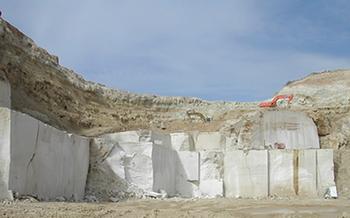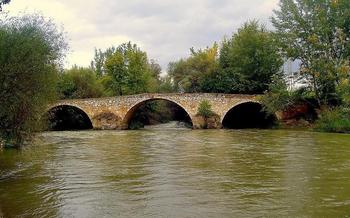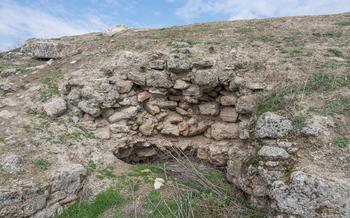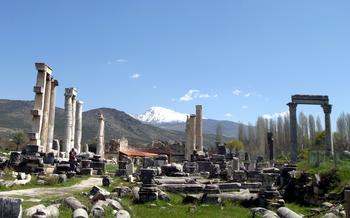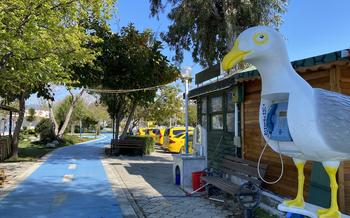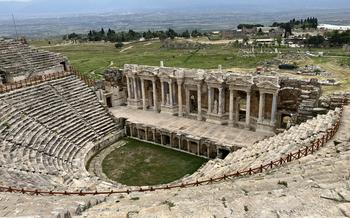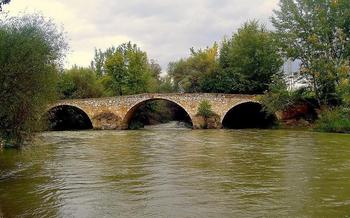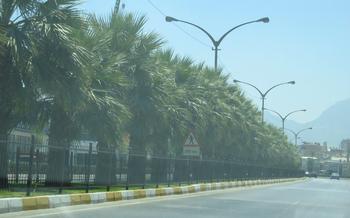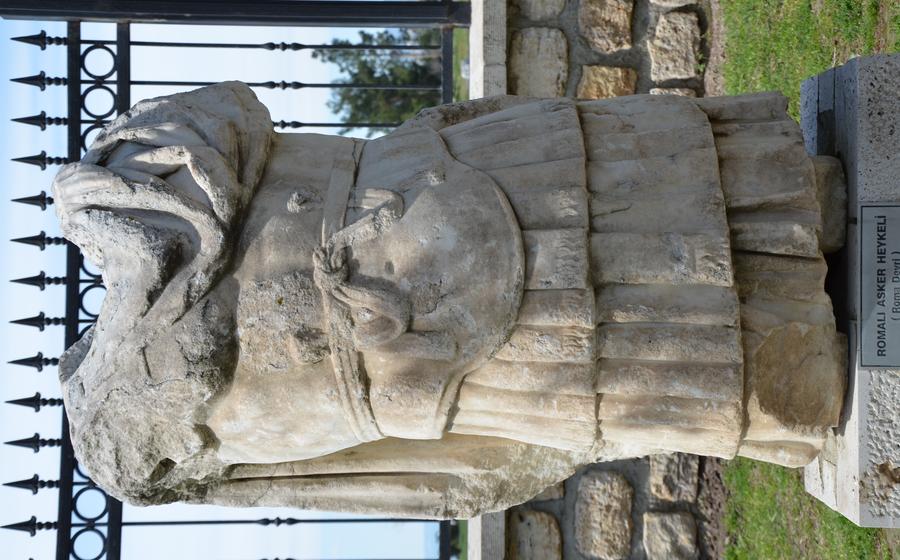
Denizli Archaeological Museum
- Denizli Archaeological Museum: Unveiling Ancient Treasures
- An Array of Artifacts
- The Ancient City of Laodicea
- The Colossal Head of Apollo
- The Mosaic Collection: A Testament to Artistic Mastery
- The Theater of Laodicea
- The Hierapolis Necropolis: A Journey Through Ancient Burial Practices
- The Pamukkale Travertines: A Natural Wonder
- The Aphrodisias Museum: A Treasure Trove of Ancient Art
- The Carpet Museum: Unveiling the Woven Wonders of Denizli
- The Denizli Ethnography Museum: A Journey into Local Traditions
- The Denizli Ataturk Museum: Honoring the Father of Modern Turkey
- The Denizli Children's Museum: Where Learning Becomes Play
- Insider Tip: Unveiling Denizli's Cultural Heritage through Festivals
Denizli Archaeological Museum: Unveiling Ancient Treasures
The Denizli Archaeological Museum stands as a testament to the rich history and cultural heritage of the Denizli region. This magnificent institution houses a vast collection of artifacts unearthed from various historical periods, offering visitors a captivating journey through the ages.
Situated in the heart of Denizli city, the museum boasts an impressive architectural design that seamlessly blends modern aesthetics with traditional elements. Its spacious galleries and well-lit exhibits create an inviting atmosphere, encouraging visitors to delve into the fascinating world of ancient civilizations.
The museum's hours of operation cater to the convenience of both local and international visitors, while the reasonable admission fees make it accessible to all. Guided tours are available for those seeking a more in-depth exploration of the museum's treasures, providing expert insights and historical context.
An Array of Artifacts
The Denizli Archaeological Museum proudly houses a diverse collection of artifacts, spanning various historical periods, that offer a glimpse into the rich cultural tapestry of the region. Among the highlights of the collection are exquisite sculptures, intricately painted pottery, and ancient inscriptions that provide valuable insights into the lives and beliefs of past civilizations. These artifacts not only showcase the artistic prowess and craftsmanship of ancient artisans but also serve as tangible links to the region's storied past.
Interactive exhibits and educational displays further enhance the museum experience, allowing visitors to engage with the collection on a deeper level. Multimedia presentations, touchscreens, and hands-on activities bring the artifacts to life, providing context and historical background that bring the ancient world to life. These interactive elements make the museum a particularly engaging and educational destination for visitors of all ages, fostering a deeper understanding and appreciation for the region's cultural heritage.
The Ancient City of Laodicea
The Denizli Archaeological Museum houses a wealth of artifacts that provide a glimpse into the history and culture of the ancient city of Laodicea. Located just 10 kilometers from Denizli, Laodicea was once a thriving metropolis during the Roman period. Founded in the 3rd century BC by the Seleucid king Antiochus II, the city grew to become a major center of trade and commerce.
The museum's collection includes numerous artifacts excavated from Laodicea, offering insights into the city's daily life and culture. Among these artifacts are coins, pottery, jewelry, and inscriptions that shed light on the city's economic, social, and religious practices. Visitors can also admire a variety of sculptures, including statues of gods and goddesses, as well as architectural fragments that once adorned the city's temples and public buildings.
To complement the museum experience, it is highly recommended to visit the ruins of Laodicea, located just a short distance away. Here, visitors can explore the remains of the city's ancient theater, stadium, agora, and other public buildings, providing a deeper understanding of the city's grandeur and significance during the Roman era.
The Colossal Head of Apollo
The centerpiece of the Denizli Archaeological Museum is undoubtedly the colossal head of Apollo, a monumental sculpture that stands as a testament to the region's rich Hellenistic heritage. Discovered in the ancient city of Laodicea, this awe-inspiring work of art is a reminder of the cultural exchange and artistic influences that shaped the region during the Hellenistic period.
The head, which measures over 2 meters in height, depicts the Greek god Apollo in his prime, with a serene expression and flowing locks of hair. The intricate details and lifelike features of the sculpture showcase the exceptional craftsmanship and artistic skill of the ancient Greek sculptors.
Beyond its artistic value, the head of Apollo holds historical significance as well. Its discovery in Laodicea sheds light on the city's close ties to the Hellenistic world and its role as a cultural and intellectual center during the period. The sculpture serves as a tangible link to the past, offering a glimpse into the region's rich history and its interaction with the wider Mediterranean world.
Displayed prominently within the museum's collection, the colossal head of Apollo commands attention and invites visitors to contemplate its symbolic meaning and historical importance. It is a must-see for anyone interested in ancient Greek art, Hellenistic culture, and the rich archaeological heritage of Denizli.
The Mosaic Collection: A Testament to Artistic Mastery
The Denizli Archaeological Museum houses an impressive collection of mosaics, each a testament to the artistic mastery and cultural influences that shaped the region. These intricate artworks, painstakingly crafted using small pieces of colored stones or tiles, depict a variety of scenes from mythology, daily life, and religious themes.
The techniques and materials used in creating these mosaics showcase the skill and dedication of ancient artisans. The artists employed a variety of techniques, including opus tessellatum (using small, square tiles) and opus vermiculatum (using very small, irregular tiles) to create intricate patterns and lifelike figures. The materials used ranged from local stones such as limestone and marble to imported materials such as glass and ceramic tesserae.
Among the highlights of the museum's mosaic collection are the "Lion Hunt Mosaic" and the "Four Seasons Mosaic." The "Lion Hunt Mosaic" depicts a dramatic scene of a lion attacking a bull, surrounded by a border of geometric patterns. The "Four Seasons Mosaic" portrays the changing seasons through allegorical figures and symbols, each season represented by a different activity or attribute.
These mosaics offer valuable insights into the artistic traditions and cultural influences of the region. The mythological scenes reflect the influence of Greek and Roman mythology, while the scenes of daily life provide a glimpse into the activities and customs of the ancient inhabitants of the region. The religious themes, such as those depicted in the "Four Seasons Mosaic," shed light on the beliefs and practices of the ancient people.
The Theater of Laodicea
The Denizli Archaeological Museum not only houses artifacts from Laodicea but also provides a glimpse into the city's cultural significance through its connection to the nearby Theater of Laodicea. This ancient theater, constructed during the Roman period, played a crucial role in the social and cultural life of the city.
With a seating capacity of approximately 15,000 spectators, the Theater of Laodicea was one of the largest in the region. Its impressive size and architectural features, including a well-preserved stage and orchestra, attest to the importance of theatrical performances in ancient Laodicea.
Visitors to the Denizli Archaeological Museum can gain a deeper understanding of the theater's history and significance through the artifacts on display. These include inscriptions, sculptures, and architectural fragments that shed light on the theater's construction, design, and use.
To complement the museum experience, it is highly recommended to visit the ruins of the Theater of Laodicea, located just a short distance from the museum. Here, visitors can explore the theater's various sections, including the seating areas, stage, and backstage, and imagine the vibrant atmosphere that once filled the space during ancient performances.
The Theater of Laodicea serves as a reminder of the rich cultural heritage of the region and offers visitors a unique opportunity to experience the grandeur and spectacle of ancient Greek and Roman theater.
The Hierapolis Necropolis: A Journey Through Ancient Burial Practices
Just outside the ancient city of Hierapolis, nestled amidst rolling hills and sprawling plains, lies the Hierapolis Necropolis, a vast cemetery that offers a glimpse into the burial customs and beliefs of ancient civilizations. This sprawling necropolis is home to a diverse array of tombs, each reflecting the cultural influences and social status of the deceased.
As you wander through this ancient city of the dead, you'll encounter various types of tombs, from simple rock-cut graves to elaborate chamber tombs adorned with intricate carvings and inscriptions. These tombs provide a fascinating glimpse into the funerary practices of the ancient Greeks and Romans, who believed in an afterlife where the deceased would continue to exist in a realm beyond the physical world.
The necropolis also features a number of sarcophagi, intricately carved stone coffins that were used to store the remains of the deceased. These sarcophagi are often adorned with elaborate reliefs depicting scenes from mythology, daily life, and religious beliefs, offering insights into the cultural and artistic traditions of the time.
Exploring the Hierapolis Necropolis is a journey through time, allowing visitors to connect with the ancient world and gain a deeper understanding of the beliefs and practices surrounding death and the afterlife in ancient civilizations.
The Pamukkale Travertines: A Natural Wonder
The Denizli Archaeological Museum also offers a glimpse into the nearby Pamukkale Travertines, a unique and awe-inspiring natural wonder. Formed by the deposition of calcium carbonate from hot springs, the travertines resemble cascading terraces of pure white, creating a surreal and picturesque landscape.
Visitors to the museum can learn about the geological formation and unique features of the travertines, including the cascading terraces and mineral-rich waters. The museum also highlights the historical significance and cultural importance of the travertines, which have attracted visitors since ancient times for their therapeutic properties and scenic beauty.
For a truly unforgettable experience, consider visiting the Pamukkale Travertines and immersing yourself in their natural splendor. Take a stroll along the cascading terraces, marvel at the intricate formations, and bathe in the mineral-rich pools, which are believed to have therapeutic properties. Don't forget to capture the breathtaking views of the surrounding landscape, with the travertines forming a stark contrast to the lush greenery of the valley below.
The Aphrodisias Museum: A Treasure Trove of Ancient Art
Nestled in the heart of the ancient city of Aphrodisias, the Aphrodisias Museum stands as a testament to the city's rich cultural and artistic heritage. Dedicated to preserving and showcasing the remarkable artifacts unearthed from Aphrodisias, this thematic museum offers visitors a captivating journey into the world of Hellenistic and Roman art.
As you step into the museum, you are greeted by a stunning collection of sculptures, inscriptions, and architectural fragments that once adorned the city's temples, theaters, and public spaces. Among the highlights of the collection is the exquisite statue of Aphrodite, the patron goddess of the city, which embodies the grace and beauty that characterized Aphrodisias' artistic legacy.
Other notable artifacts include intricate reliefs depicting scenes from mythology and everyday life, as well as finely carved architectural elements that showcase the city's mastery of stoneworking. The museum also houses a collection of inscriptions that provide valuable insights into the history, culture, and administration of Aphrodisias.
Beyond the museum's walls, the ancient city of Aphrodisias awaits exploration. Wander through the well-preserved ruins, marvel at the grand theater, and admire the remains of the Temple of Aphrodite, which once stood as a symbol of the city's devotion to its patron goddess. The combination of the Aphrodisias Museum and the ancient city offers a comprehensive and immersive experience, allowing visitors to delve into the artistic and cultural achievements of this remarkable ancient metropolis.
The Carpet Museum: Unveiling the Woven Wonders of Denizli
Nestled amidst the vibrant tapestry of Denizli's cultural heritage, the Carpet Museum stands as a testament to the region's rich tradition of carpet weaving. This specialized museum invites visitors to embark on a journey through the intricate world of Turkish carpets, where artistry, history, and craftsmanship intertwine.
Upon entering the museum, visitors are greeted by a kaleidoscope of colors and patterns, as carpets of various sizes, designs, and origins adorn the walls and floors. Traditional Anatolian kilims, with their bold geometric motifs and vibrant hues, share space with intricately knotted rugs, showcasing the meticulous craftsmanship of skilled weavers.
The museum's exhibits provide a comprehensive overview of the history and significance of carpet weaving in Turkey. Visitors can learn about the different techniques employed by weavers, from the traditional hand-knotting methods to the more modern mechanized processes. Displays of raw materials, such as wool, silk, and cotton, highlight the importance of selecting high-quality fibers to create durable and visually appealing carpets.
Interactive displays and demonstrations allow visitors to engage with the art of carpet making firsthand. Skilled artisans provide live demonstrations of the intricate knotting techniques, showcasing the patience and precision required to create these masterpieces. Visitors can also try their hand at weaving on small looms, gaining a deeper appreciation for the skill and dedication involved in this traditional craft.
The Carpet Museum is not merely a repository of artifacts; it is a vibrant center that celebrates the living tradition of carpet weaving. Visitors can purchase carpets and other woven goods directly from local artisans, supporting the preservation of this cultural heritage while taking home a unique souvenir of their time in Denizli.
The Denizli Ethnography Museum: A Journey into Local Traditions
Nestled in the heart of Denizli, the Ethnography Museum stands as a testament to the region's rich cultural heritage. Dedicated to preserving and showcasing the traditional lifestyle and customs of the Denizli people, this museum offers a captivating glimpse into the past.
Upon entering the museum, visitors are greeted by an array of exhibits that delve into various aspects of daily life. Traditional clothing, intricately embroidered with vibrant colors and intricate patterns, adorns mannequins, showcasing the region's textile artistry. Handcrafted tools used in agriculture, such as plows and sickles, provide insights into the traditional farming practices that have shaped the region's economy for centuries.
Interactive displays and multimedia presentations bring the exhibits to life, allowing visitors to experience the sights and sounds of Denizli's past. Traditional music fills the air, while videos and documentaries showcase the customs and rituals that have been passed down through generations.
The museum also hosts workshops and demonstrations, providing visitors with an opportunity to learn firsthand about the traditional crafts and skills that have been preserved in the Denizli region. From intricate carpet weaving to pottery making, these workshops offer a hands-on experience that allows visitors to connect with the region's rich cultural traditions.
A visit to the Denizli Ethnography Museum is a journey through time, offering visitors a glimpse into the vibrant cultural heritage of this fascinating region. Whether you are a history buff, a cultural enthusiast, or simply seeking a unique and immersive experience, this museum is sure to captivate and inspire.
The Denizli Ataturk Museum: Honoring the Father of Modern Turkey
The Denizli Ataturk Museum stands as a testament to the life and legacy of Mustafa Kemal Ataturk, the revered founder of the Turkish Republic. Within its walls, visitors embark on a journey through history, tracing the footsteps of a visionary leader who transformed the nation's destiny.
Through a captivating display of historical artifacts, photographs, and documents, the museum narrates the remarkable story of Ataturk's rise from a military strategist to the father of modern Turkey. Visitors witness the pivotal moments of the Turkish War of Independence, where Ataturk's unwavering leadership guided the nation towards freedom and sovereignty.
Interactive exhibits and multimedia presentations bring Ataturk's vision and achievements to life, immersing visitors in the challenges and triumphs that shaped the course of Turkish history. The museum serves as a poignant reminder of Ataturk's enduring legacy, inspiring generations to embrace his ideals of progress, secularism, and modernization.
For those seeking a deeper understanding of Turkey's modern history and the transformative role of its founding father, the Denizli Ataturk Museum is an essential destination. Here, visitors pay homage to the man who laid the foundation for a nation that continues to flourish, honoring his unwavering commitment to progress and nation-building.
The Denizli Children's Museum: Where Learning Becomes Play
Nestled amidst the vibrant city of Denizli, the Denizli Children's Museum offers a unique and educational haven for young minds. Designed specifically for children, this interactive and engaging museum transforms learning into an adventure, sparking curiosity and igniting a passion for knowledge.
The museum boasts a diverse range of exhibits, each meticulously crafted to captivate young visitors and stimulate their imaginations. From interactive displays on science and technology to cultural and historical exhibits, the museum provides a platform for children to explore, discover, and learn through play.
Hands-on activities, games, and workshops are seamlessly integrated into the museum's design, allowing children to engage with the exhibits and grasp complex concepts in a fun and memorable way. Whether it's conducting scientific experiments, creating colorful artwork, or learning about the wonders of the natural world, the Denizli Children's Museum offers an immersive and interactive experience that caters to every child's interests.
To ensure a truly memorable and educational visit, the museum's dedicated staff is always on hand to assist children and their families. They provide guidance, facilitate activities, and encourage curiosity, fostering a supportive environment where learning thrives.
For families seeking a fun and educational day out, the Denizli Children's Museum is an ideal destination. With its interactive exhibits, engaging activities, and dedicated staff, the museum offers a unique and unforgettable experience that will spark a love of learning in every child.
Insider Tip: Unveiling Denizli's Cultural Heritage through Festivals
To truly immerse yourself in the cultural tapestry of Denizli, time your visit to coincide with one of the many festivals held throughout the year. These vibrant celebrations offer a unique opportunity to witness traditional performances, listen to enchanting music, and experience the infectious energy of local dances.
One of the most popular festivals is the Denizli Cherry Festival, held annually in June to celebrate the region's famous cherries. Visitors can indulge in delicious cherry-based delicacies, witness cherry-picking competitions, and enjoy live music and performances.
Another highlight is the Laodicea Festival, held in the ancient city of Laodicea during the summer months. This festival transports visitors back in time with historical reenactments, gladiator fights, and traditional craft demonstrations.
For a truly authentic experience, don't miss the Denizli Carpet Festival, showcasing the region's renowned carpet-weaving tradition. Visitors can witness skilled artisans demonstrating their craft, admire exquisite handmade carpets, and even participate in hands-on workshops.
These festivals provide a glimpse into the rich cultural heritage of Denizli, allowing visitors to connect with the local community and create lasting memories.
